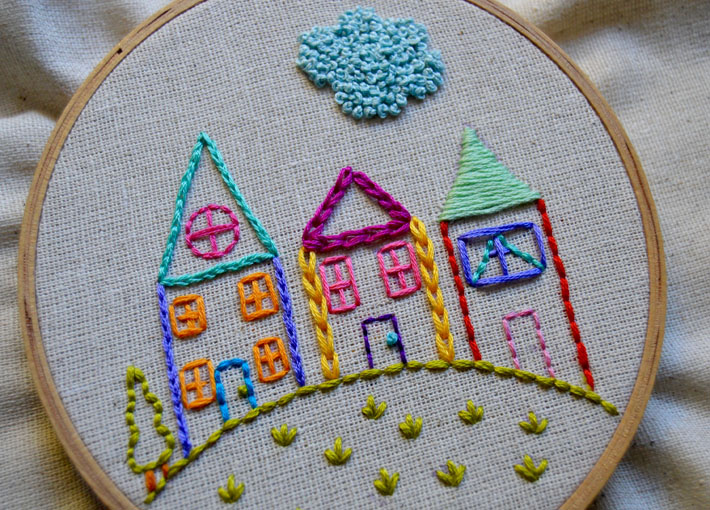Embroidery is one of the most popular craft skills, enduring for centuries whether that’s as a way to make clothes for the household, important historical artefacts like the Bayeux Tapestry, or as a hobby that lets you decorate your home and make gifts for friends!
Starting to develop your embroidery skills is a great way to spend your time, especially with a cold, dark and unusually restricted winter bearing down on us. Today we’re taking a look at how you can prepare to begin your first embroidery project.
Table of Contents
Gathering the Tools
Embroidery is a relatively simple craft: the only vital tool you need is an embroidery needle but choosing the right one is important. For counted thread embroidery styles you need a tapestry needle – with a blunted point, to help you bunch between the weave of the fabric, rather than pierce the threads themselves. Surface embroidery techniques need a crewel needle – one with a sharp point to help them pierce the fabric.
You can also get needles in different sizes – in general, smaller needles let you do finer, more delicate stitches but are harder to handle, while larger ones are easier to use but make larger, clumsier stitches.
Other important tools for embroidery are sharp scissors, stitch unpickers, measuring tape and a marker that it’s easy to wash out, be that chalk or a water soluble pen.
Materials
The basic material of embroidery is thread, and specifically, one known as embroidery floss. This is a thicker thread, made of multiple entwined strands that you can unwind for finer highlights or use whole to make a more colourful impression.
Other techniques can use different materials. Some kinds of tapestry work can even use wool, to create a very textured final piece. As a beginner, it’s probably best for you to start with standard embroidery floss and learn some basic stitches and techniques before branching out.
If you’re interested in getting started but overwhelmed by the choices on offer then ordering a craft box could be a good idea – these can be delivered to your house (either individually when you order them or on a monthly subscription) with everything you need for a project, from complete hand embroidery kits to beginner’s instructions instructions!
Somewhere to Work
Finding somewhere comfortable to practise your craft skills is important: even a simple project can be a few hours of work and focus, and if you don’t have the right chair or the right levels you could hurt your back, your eyes and your appetite to carry on crafting!
We don’t all have a spare room we can turn into a crafter’s paradise, but making sure you have a corner of your bedroom or living room is important: make sure you have a chair with good back support, and a clear source of light in the daytime and the evening, and there’s nothing that will come between you and your first embroidery project!

come dimagrire velocemente